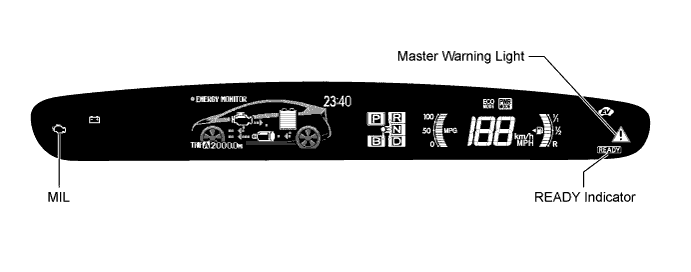The power management control ECU (HV CPU) has a self-diagnosis system. If the computer, hybrid vehicle control system, or a component is not working properly, the ECU records the conditions that relate to the fault. The ECU also illuminates the master warning light in the combination meter and provides other appropriate messages on the multi-information display, such as the HV system warning message, the HV battery warning message, on the discharge warning message.
- HINT:
- The master warning light will illuminate when the hybrid vehicle control system malfunctions and the light will blink when in inspection mode.
